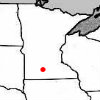|

scmn | And 50' of 2" hose holds 8 gallons of fuel + all the lines on the truck and thus is similar to a 1000 gallon barrel. With a 1000 gallon barrel, the 10-20 gallons remains 1-2% of the volume; thus a 98-99% reduction in concentration per 1000 gallon fill is attainable (96-98% when adding 500 gallons) and thus does not take long to dilute, assuming a 0% concentration of dye in the makeup fuel. Since the makeup fuel is likely contaminated with some dye, due to the number of transfers the fuel has had, but the concentration is likely close to 0% of the detectable amount.
Kind of like dilution is the solution to pollution, dilution is the solution to dyed fuel. Positive tests will require X ppm for positive, dilute to below X ppm and test will show negative; hence why fuel is dyed is several times more concentrated that what is detectable, to prevent dilution and limit false positives. I was told by the regional fuel rep (from the refinery) that the IRS requires the dye to be 5X the detectable limit when the fuel leaves the refinery since dilution can and will occur in varying amounts every time the fuel is transferred (transfer to tanker, tanker to storage, storage to delivery truck, delivery truck to customer tank, customer tank to vehicle). Now this was about 4 years ago and they may have revised the concentration, but I highly doubt it. We run clear fuel in our tractors due to only having 2 barrels (1 diesel, 1 gas) and with the clear fuel filter on the 4020 it only took a couple tanks for the red to disappear from the fuel.
Assume: detectable amount of dye is 500 ppm and a 1000 gallon barrel containing 20 gallons of fuel that is dyed at 5x the detection limit is filled with 980 gallons of fuel that contains 10 ppm dye in the fuel, what is the new concentration of dye in the fuel? And is this concentration detectable? To solve, one must find the total dye relative to fuel. Thus total dye can be calculated as 5*500ppm*20gallons (5x requirement * 500 dectatable * 20 gallons) + 10 ppm * 980 gallons = 50000 + 9800 = 59800 ppm*gal then divide by volume of 1000 gallon and you get 59.8 ppm which is 11.96% of the detectable limit. On the first fill of the tank the fuel diluted for 5x the detecable limit to approx 1/8 of the detectable limit. Thus the answer is the new concentration of dye is 59.8ppm and is not detectable.
The barrel that we use for clear diesel had dyed fuel prior to us purchasing it (20+ years). When it was purchased there was 5 gallons of dyed fuel in the barrel (we raised the end of the barrel to get most of the fuel out), we then added 10 gallons of clear and pumped barrel into tractor. Added 10 more gallons and pumped into tractor. Then called DOT, explained the situation and not wanting to contaminate pickup, and they stopped by and dipped the tank and test did not show dyed fuel. Filled barrel with clear, pumped into pickup and never had positive test for dye. We did this to reduce the concentration faster to approx 1/9 original and then proceeded to fill the barrel. So our concentration was originally 5X, then fell to 1.67X then to .56X then to .0028X.
The old wives tale that everyone "here" tells is that the dye gets into the tank and you can never get rid of it and the system will always test positive once dye is introduced; which is an old wives tale. If you don't believe me, have your supplier take you to meet their reps from the refinery and ask them how much dye they add and if it stays in the tank; I will bet money that they do not add much, if any, more than is required by law, since the dye is not free. They will also tell you that the dye does not stick around in the tank.
Theoretically you could dilute dyed fuel with clear fuel and keep the concentration of dye low enough to be undetectable and would theoretically be 1:4 (1 gallon of red for every 4 gallons of clear), with this assumption you would be relying on no contamination of the clear fuel in the supply channel (highly unlikely) to save 20% of the fuel tax or $.10/gallon at which point the risk is not worth the reward; further dilution reduces savings.
The point is in the cases where a filter is filled, or some in the bottom of a 5 gallon jug that is dumped in a pickup is not enough once diluted into a full fuel tank to be detectable and the guys that "only did it once" are lying.
On a side note, if you were to put red fuel in your diesel lawn mower, the state could get after you for failure to pay sales tax since lawn maintenance is not considered agricultural use since it does not contribute to the direct production of an agricultural product. The IRS would not bother, unless the lawn mower is operated on the road. | |
|


 D.O.T. Fuel inspection for colored fuel .
D.O.T. Fuel inspection for colored fuel .